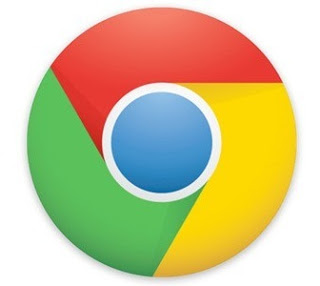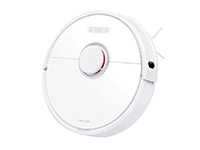Top 5 Downloads
1. Avast Free Antivirus 2014

Design: Avast's new layout is a unique and clean take on managing security. Rather than copying a flat Metro look like so many others, Avast organizes its environment and prioritizes it in a sensible manner. Flat icons and subtle menu animations look great, secondary pop-out menus don't feel cluttered, and the toggle icon also helps create a cleaner experience.
Security: An improved firewall, noninvasive scanning, and a complementary, crowdsourced, whitelisting approach via Community IQ keeps this security suite on alert for untrustworthy sites and phishing scams. A noninvasive browser add-on protects your Web usage with built-in do not track integration and selective blockers for analytical and social trackers.
Utility: Avast represents itself as more of a security manager than just a conventional scanner. This version includes a command center-like dashboard for tracking security statistics, pop-up notifiers for system status and security news, a multidevice manager, and a streamlined upgrade pipeline via in-app store.
Cons:
Small disclosure: Installing certain components like browser plug-ins, useful though they may be, can also be viewed as an unwanted surprise. The installer gives you options to install various components but throws a lot of information and component offers to users at once without much to go by.
Varied performance: According to a previous protection report from August, Avast scored higher than the average scanner but still behind many of the top performers. The added browser plug-in, though great when it works, sometimes became sluggish when we tested out some sites with heavier analytic trackers.
Information overload: Global and personal stats are great to see, but are they really useful for the average user? Even an advanced technician can really get only so much value out of numbers without any real numerical or unit-based indication of what they represent. Perhaps a market researcher may get more use out of this.
2. AVG AntiVirus Free 2014

AVG's Anti-Virus and Internet Security line follows on the heel of last year's highly-ranked security suite by not merely incorporating some minor but key tweaks to both its front-end and back-end, but a stronger push toward personal data management and privacy utilities that help prevent uninvited access to your files. Though many threats still exist, security programs as they stand now start to encompass areas of privacy utilities. Whereas the majority of threats were once external viruses trying to force their way into your machines, nowadays malware focus more on tricking users to inadvertently open doors for hijacking.
Version 2013 was AVG's first push toward adopting and remixing the Modern UI movement. Not just a response to competitors, the Modern UI movement represents an overall push toward creating a more streamlined security experience. For the average consumer, what your anti-virus and anti-malware programs do to protect your computer have followed a set it and forget it mentality.
Balancing along the fine line of being both approachable yet empowering is a key goal of not just AVG but also just about any utility software developer: Modern UI has the visual appeal, but does it evoke control and the sense of security over all the software's power features?
In our last review, we commended AVG's decision to reduce the installation steps. It still contains a toolbar offer, and despite the universal hatred toward being fooled into installing yet another browser helper object, AVG's toolbar actually does include useful security options like Do Not Track. Again it's a tradeoff but if you really wanted DNT's features, then there's a standalone version available for free on Firefox and Chrome in their respective extension stores.
By now, almost every major security software maker has more or less adopted the flat, Modern UI look and AVG has kept its own visuals mostly intact. The main screen is decorated with AVG's primary areas of protection that include your computer, browsing the Web, Identity protection features, e-mail protection, and extras that populate the second row if you opt to purchase the premium or Internet Security suites. It's the same as last year's design, but still a radical departure from the old AVG that's appreciated, yet still may take some getting used to for the more hands-on user. Thankfully, all it's older scan settings are still neatly tucked under the options, though they aren't nearly as touch-friendly.
All visual and organizational improvements aside, AVG 2014 (along with many other security suites we've seen) have more or less been continuing to dress a Windows 7 application without completely assimilating into the actual Modern UI environment, wholeheartedly. I can understand this context under the stance that there are still many who don't face a real urgency to upgrade to Windows 8. But if you're moving toward minimal input and maintenance for running a security program in the background, then perhaps Modern UI might be better suited in the long run.
3. Driver Booster

IOBit's Driver Booster analyzes your PC for out-of-date drivers -- and updates them with a click. Cloud-based resources track the latest updates. Driver Booster is available in two versions: Driver Booster Free, which can automatically identify new updates and install them individually or all at once, and Driver Booster Pro, which does all that and more, including offering licenses and technical support for up to three computers. We tried Driver Booster Free in Windows 7.
Driver Booster's dark-toned user interface displayed all our system's drivers in its scan results, with those needing critical updates at the top of the list. It found updates for seven drivers, though most were chipset drivers that only required a single download, plus a timely update for our graphics card. Driver Booster's recommended mode downloads, unzips, and installs drivers in the background, minimizing the open windows and pop-ups that come with doing it the hard way. Updating our chipset drivers required a reboot, and Driver Booster can shut down your PC when it finishes, too. After rebooting, we rescanned our PC and got the all clear from Driver Booster. To keep it that way, we could launch Driver Booster at startup, schedule regular scans, add drivers to the Ignore List, and enable proxies and network log-ons in the Settings (check the User Manual for more information and support). The driver backup tool isn't active in the freeware, but that's OK because you back up your entire computer regularly, right? (You don't? Houston, we have a problem...)
It doesn't get much easier than this to make sure your system's drivers are up to date. IOBit's Driver Booster is a great addition to any user's toolbox -- even those who aren't sure what a driver does.
4. CCleaner

Nowadays, cookies, temporary files, and various other means of tracking your Web footprint are par for the course. Some of these trackers are useful, while others can be potentially intrusive. Thankfully, there are myriad freeware cleaners out there that help keep your system in check. CCleaner is one of the better ones for its ease of use and powerful cleaning capabilities.
CCleaner's simple and intuitive layout will appeal to users of all skill levels. Its four features -- Cleaner, Registry, Tools, and Options -- are prominently displayed on the left side of the window. We started with the Cleaner first, which breaks down your cleaning options into two tabs: Windows and Applications. The program works by first analyzing your system and then running the cleaner itself. By selecting the appropriate check boxes, we were able to clean our temporary Internet files, cookies, history, and cache in both Internet Explorer and Firefox at the same time, as well as empty our Recycle Bin and rid our computer of Windows log files. The Registry feature acts in the same fashion, letting you check off on the options you'd like to scan for issues. In less than 30 seconds, the program had scanned and displayed a long list of invalid entries that we could then opt to fix or leave alone by unchecking the boxes. In less time than it took to scan, the program fixed the issues we had selected. One note: We did have to run the Registry cleaner three times in a row before it came back with no issues found; each time it came back with fewer and fewer invalid entries. Using the Tools feature, we were able to manage our startup programs and successfully uninstall programs. We especially liked that CCleaner lets you manage your cookies so that you don't delete ones that are useful when browsing the Web. As with all Registry cleaners, we recommend that you proceed with caution before fixing or deleting any files. CCleaner does offer an online help feature, but for basic cleaning, you probably won't need it.
By default, the project opts you in for installing desktop and Start menu shortcuts, as well as adding run and open options in your Context menu. It also opts you in for installing Google Chrome and making it your default browser, so you'll have to uncheck the boxes to opt out. CCleaner installs and uninstalls without leaving any files or folders behind.
CCleaner-Clean up junk files and invalid Registry entries.-Download Video Previews:
5. IObit Malware Fighter

IObit's latest version release brings Malware Fighter to 2.0 and showcases a much more eye-popping design that is more consistent with the modern look and feel of Windows 8.
You'll be greeted with four basic options: Scan, Protect, Update, and Action Center. Since version 1.7, IObit's latest design feels much cleaner and certainly more intuitive for the average user. The original overview graph that the previous version opened with is now tucked away.
Previously included features like cloud scanning and quarantine lists are still present, but reside in a more modernized settings panel to the right, labeled by monochromatic icons. Scanning settings and options exist as on/off switches, similar to those in Windows 8. Make no mistake: Version 2.0 is undoubtedly developed for touch screens.
Though this version is free, that also means it's ad supported. However, IObit has opted to remove all the extraneous social-sharing options, with the exception of a Like button on the bottom right; again, we've never used it but if you're really into it, then the option is there.
We ran a full scan to first test for any bogus claims of "threats" that come from detecting the usual temp files cached by your browser, as well as other common false alerts. IObit came out clean, which was a good sign. Scan speeds were also respectable given the state of our file system. You can also set custom scans and isolate Malware Fighter to look for threats just within your memory processes or select drives.
One minor issue we had with Malware Fighter was that it classifies the absence of Advanced SystemCare and Smart Defrag as "problems." There's no option to clear out these warnings, and choosing to fix them results in an automatic download and installation of IObit's other product offerings.
Compared to its previous version, IObit Version 2.0 is a step in the right direction despite its questionable labeling of ASC and Smart Defrag. But if you're looking for an easy-to-use, lightweight malware scanner, then Malware Fighter does the job.
IObit Malware Fighter - Scan you PC and remove all kinds of malware

































